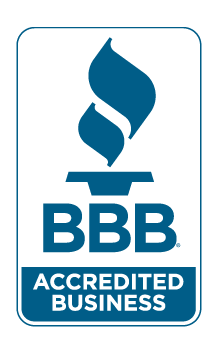One the most frustrating aspects for insurance agents moving from Final Expense products to Mortgage Protection products is understanding the underwriting. All of a sudden your cases are being inundated with questionnaires, table rated, or worse declined. In fact this frustration has led many agents to leave the industry altogether as they are battling chargebacks from final expense and declines from mortgage protection.
However, once you grasp the underwriting process adding Mortgage Protection to your marketing plan can be very lucrative. The products often used in this market are term, universal life, and simplified issue whole life. These types of products come with a host of different riders that can be attached to the policy to further enhance your clients' position. Policy riders we will cover in a different article.
Term insurance is the most popular product used in this market, therefore, will be the product of focus here. Term comes in simplified issue or fully underwritten. Don't be fooled by the "simplified issue" in the product description, this is completely different from simplified issue whole life used for final expense.
Simplified issue term, for those carriers that offer the product, most often comes with four tables (referred to as T4 or Table D) built in the product, however a client qualifying for a T5 (table E)rating would be declined. Fully underwritten means a Paramed is necessary to complete the application which may have ratings that can go as high as T12.
While the above definitions of both term products is very broad there are several other differences you will need to know when offering these products. Such as height/weight chart, conversations, minimum face amount, etc. Generally, the minimum face amount for fully underwritten term is $100,000 while simplified issue term can be as low $10,000 or most often $25,000 depending on the carrier.
When it comes to the application the field underwriting from the agent is where the rubber meets the road on whether your application gets placed, rated, or declined. Think of table ratings as equal to conditions. For example. A client taking one high blood pressure medication would be rated at T1; that same person taking three high blood pressure medications would mostly likely be a T4.
Another example would be someone who has non-insulin type 2 diabetes. Here the age of onset becomes the issue. After age 50 would be T2 if controlled whereas diagnosed before age 50 would be a T4 if controlled. Take a person who was diagnosed with type 2 non-insulin diabetes controlled with oral medication(s) at age 45 who is 6' 0" tall weighing 268 lbs., who also takes a high blood pressure medication. He/she would be declined with simplified issue term: diabetes =T4 + HBP =T1 + H/W =T1.
However, that same person under a fully underwritten application would receive an offer from the carrier that might be a T2 as other factors come into play in determining the risk of the client. The bottom line in working the underwritten world of mortgage protection is to first start with simplified issue term products. Add up each condition(s) table rating. If you exceed T4 then present an offer that will be fully underwritten.
When working the final expense market as you went down the list of questions you asked some background questions to help field underwrite your prospective client. It wasn't necessary to record those answers as the product used was a simple yes or no. Most carrier applications are three products in one. Meaning a yes answer near the top was often a decline, the next group would be graded and all no answers meant a preferred rate. Most applications even told you what product your client would qualify for when yes answers were given. Not so much in the underwritten world.
Use the application as a guide to the weight of the condition and its table rating. Each application is generally broken up into sections which contain the health questions. The first group contains the most serious. Those questions that are answered yes will be most likely declined regardless of the type of product offered.
The next groupings are where you can look at the conditions and begin adding up the table ratings. As you progress down the list of questions the smaller the table rating is weighted. To move your application through the system faster be sure to give very detailed descriptions which are required for each yes answer.
For example, if the client has diabetes ask the age of onset, their last A1C reading, average daily reading; for high blood pressure ask the age of onset, their last reading, and when that was taken and why. Getting the medications is always necessary. Checking those medications against the prescription guide will also help you field underwrite successfully.
Your success in the mortgage protection market place comes down to experience. While you can learn how a particular carrier will handle certain conditions and/or combinations of conditions through trial-and-error, however, doing so could easily result in a declined application for your client.
Which in turn will prevent your client from qualifying for a similar policy with most every carrier as there is a question on all term, universal life, and whole life applications that asks whether the "insured has been declined, rated, or modified in the past two years?" If yes, the new application will be automatically declined or postponed until at least two years has past. Lastly, when making the transition and learning the underwritten world of mortgage protection, if you want to be successful right out the gate then work with an MGA that knows the business. That is willing and able to provide the support you need to get your applications approved and placed. After all we're paid on approved and placed applications not just submitted.
© Copyright Legacy Secure on MI Inc






